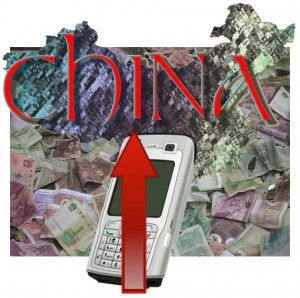The sub sandwich chain has had a smartphone and web presence for quite a while but this will step it up.
Though Subway is far from new to the smartphone ecosystem, it is making its way into a new direction that is meant to provide enhanced transaction methods by way of mobile payments solutions.
They are now working on the launch of new options that will include integration with PayPal.
Karen Webster, the MDP CEO, has been working with the director of global payments and emerging commerce at Subway, Ken Moy, as well as the co-founder of Paydiant, Chris Gardner, in order to help to understand the way that the digital lifestyle and the healthful lifestyle are now coming together and how Subway can use this trend to benefit its customers. Among the solutions that they found was a range of new mobile payments options that include its web presence, its mobile app, and an integration with PayPal.
The goal of these mobile payments and m-commerce options is to make ordering very easy.
 This is only the latest in a much broader strategy to incorporate the use of mobile technology into the Subway customer experience. The focus is to be able to broaden and bring together the various channels through which customers can interact with the brand and its restaurants, for a more complete, convenient, and seamless process.
This is only the latest in a much broader strategy to incorporate the use of mobile technology into the Subway customer experience. The focus is to be able to broaden and bring together the various channels through which customers can interact with the brand and its restaurants, for a more complete, convenient, and seamless process.
According to Moy, “It’s the coming together of the healthy lifestyle Subway is known for with the digital lifestyle that consumers expect.” He went on to say that overall, customers expect that their favorite companies will be able to provide them with a “a beautiful customer and digital experience.” He stated that “we are going to need to be able to be flexible and continue to add on feature-functionality and other services to fulfill that digital promise to our customers.”
The mobile payments options are now being launched at the order.subway.com online experience as well as though its mobile app, so that there will be less friction when customers pay for their orders. PayPal is on Subway’s list of upcoming offerings and this will arrive before the close of the year.
Shopping over smartphones and tablets is moving ahead in a striking way within that country.
Emarketer has now released data that has shown that the m-commerce marketplace in China, representing shopping occurring over smartphones, tablets, and other types of mobile devices, will be reaching $334 billion, this year.
That figure represents a record breaking 49.7 percent of the total expenditure over online channels.
This prediction suggests that over 10 percent of the total retail sales in China will be occurring over m-commerce by next year. This trend in China is an important one, and it is an estimated 450 percent greater than what is going on in the United States. In the U.S., it is believed that sales over mobile commerce will rise by 32.2 percent. The retail sales over smartphones and tablets will represent 22 percent of the total online shopping. That said, from a broader perspective, they will make up only a tiny 1.6 percent of all retail sales in 2015.
This is microscopic next to China’s m-commerce portion of all sales, which is 7.9 percent.
 It is clear that the Chinese retail market is seeing notably faster and greater mobile commerce growth than the trend throughout the world. That said, its own marketplace continues its direction toward the digital sphere. Online retailers are working hard to ensure that they are continually prepared to evolve as consumers expect, and they are working hard to help to bring that same ease of shopping into areas of the country that are harder to reach.
It is clear that the Chinese retail market is seeing notably faster and greater mobile commerce growth than the trend throughout the world. That said, its own marketplace continues its direction toward the digital sphere. Online retailers are working hard to ensure that they are continually prepared to evolve as consumers expect, and they are working hard to help to bring that same ease of shopping into areas of the country that are harder to reach.
Two giants – JD.com and Alibaba – are making major investments into the rural communities of China, where there is the most room for online shopping growth within the country. In fact, the current rate of mobile commerce use is greater in the rural areas than it is in the large urban centers. This makes sense, considering that people in the major cities have a much greater availability and selection of products than those who are away from the ocean of brick and mortar shops.
That said, m-commerce needs to be implemented strategically. Even Alibaba has seen less than one tenth of its online purchases shipped to rural areas despite the massive potential there.
 This is only the latest in a much broader strategy to incorporate the use of mobile technology into the Subway customer experience. The focus is to be able to broaden and bring together the various channels through which customers can interact with the brand and its restaurants, for a more complete, convenient, and seamless process.
This is only the latest in a much broader strategy to incorporate the use of mobile technology into the Subway customer experience. The focus is to be able to broaden and bring together the various channels through which customers can interact with the brand and its restaurants, for a more complete, convenient, and seamless process.
 It is clear that the Chinese retail market is seeing notably faster and greater mobile commerce growth than the trend throughout the world. That said, its own marketplace continues its direction toward the digital sphere. Online retailers are working hard to ensure that they are continually prepared to evolve as consumers expect, and they are working hard to help to bring that same ease of
It is clear that the Chinese retail market is seeing notably faster and greater mobile commerce growth than the trend throughout the world. That said, its own marketplace continues its direction toward the digital sphere. Online retailers are working hard to ensure that they are continually prepared to evolve as consumers expect, and they are working hard to help to bring that same ease of 